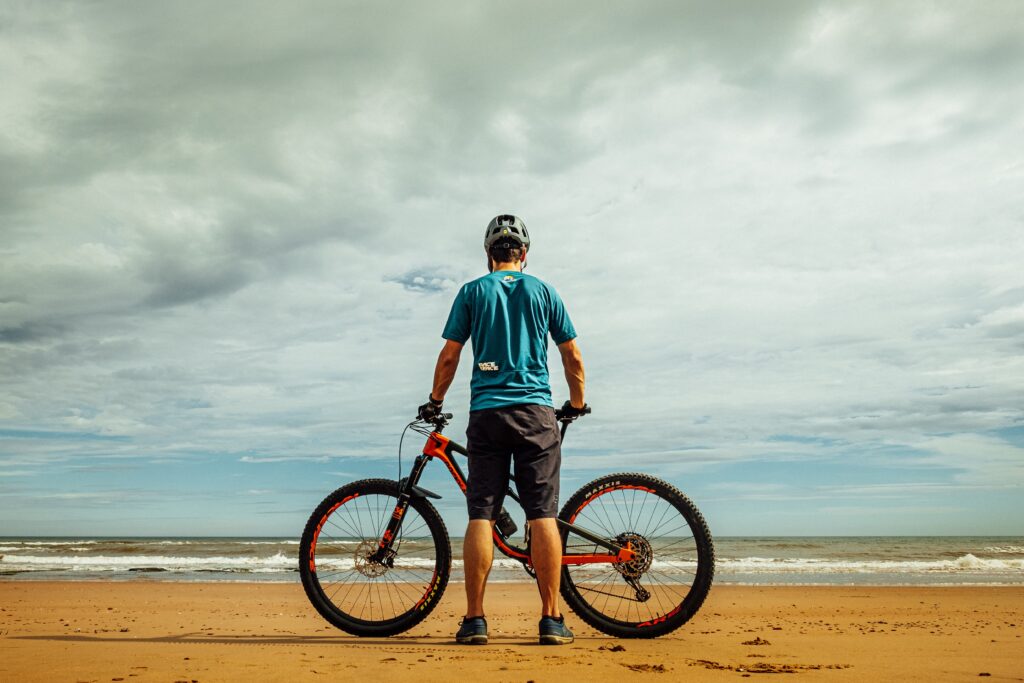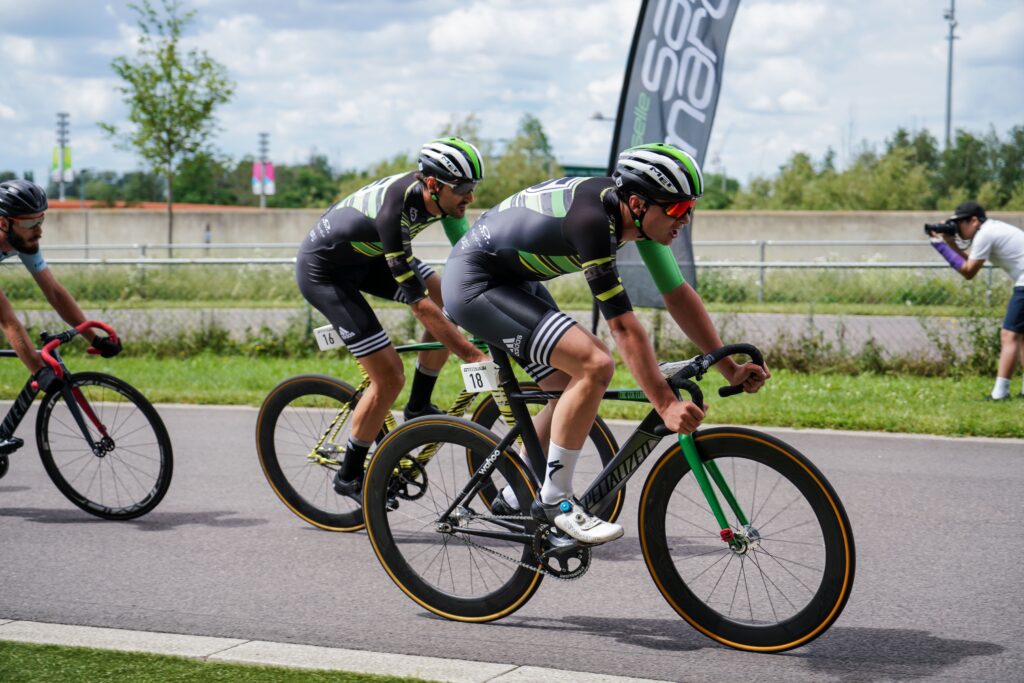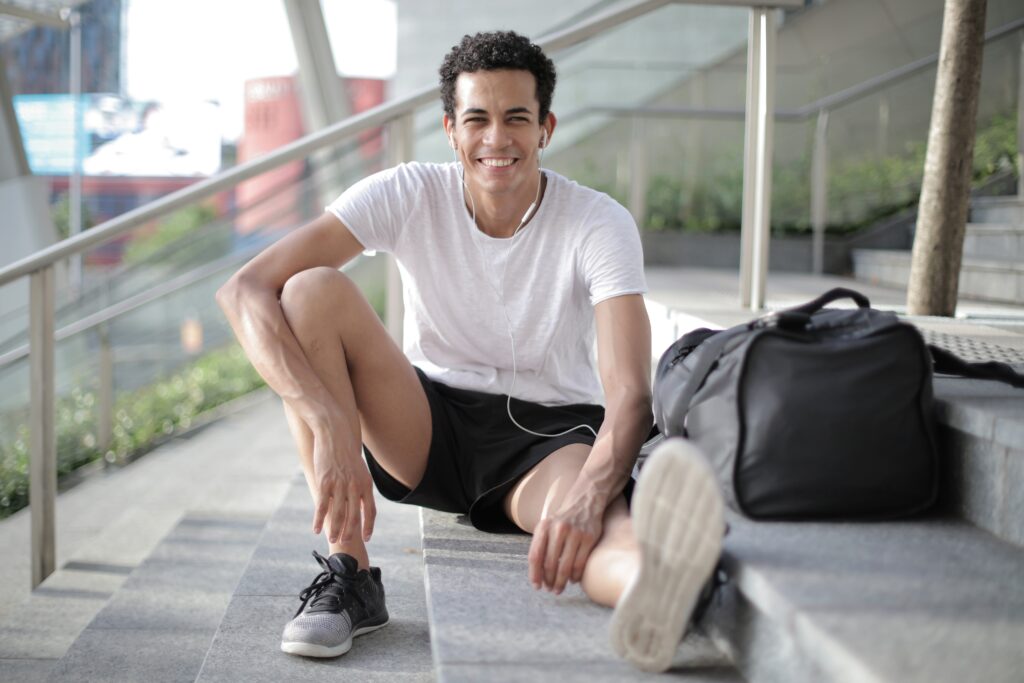Recovery After Cycling
It is common to go harder and ride for miles when you are training for a big event. But “no off days” isn’t exactly the best motto to have when it comes to cycling. It is not the best idea to go climbing or hiking when you should be recovering from cycling.“Under recovering” is a common mistake that most cyclists make.

When you don’t give your body time to recover, the damaged muscles are not repaired and you may not be strong enough to push harder when it’s needed. As a cyclist, you need to take recovery very seriously—just as (if not more) seriously than you take your training.
Cycling recovery should come first before training if you want enjoyment and longevity on the bike.
Why is Cycling Recovery Important?
Recovery should be an important part of your schedule as a cyclist. During training, your muscles are broken down and your body is under stress.
When recovering, the muscles adapt, repair and become stronger so that the same exercise is less hard the next time you do it.
If you do not set aside rest days for recovery and repair purposes, you will not make any progress and you are increasing your risk of injury, illness and over-training.

How Many Rest Days Do I Need?
Balancing training and rest can be harder than it sounds. If you take fewer rest days, you risk overtraining and if you take more rest days, you risk stagnating.

There is no one specific resting plan to fit all.
Every cyclist is different in terms of age, general health, family and work stresses and how far the goal race is from an individual. Listen to your body to know whether you need rest or not.
These simple signs will let you know that you need some rest:
- Feeling mentally tired.
- Your heart rate is elevated.
- Unable to hit your training goals.
It is a skill to understand your body signal and it comes with experience. If you are not sure about your rest days, ask an experienced cyclist or a coach to help you.
Cycling Recovery Tips
The following tips will help you recover so that you can improve your cycling performance:
- Take time for cooling down
You may need extra time to cool down but ten minutes of riding easily on a bike will help your body return to its original state before the exercise. Spinning your legs will encourage blood circulation throughout the body, which helps with the recovery process by eliminating waste products from the muscles.
During cycling, the blood vessels in your legs expand and if you suddenly stop, the blood in your legs will be similar to a pool of water. This may reduce the ability of your body to eliminate wastes and take in fresh blood. It can also make you lightheaded.
- Hydrate using recovery drinks
You can easily experience dehydration if you are training hard and long or hydrate less while riding especially on warm weather. The recovery process will be slowed down since it is hard for your heart to pump oxygen and blood throughout your body.
After a shorter and easy ride, hydrating with water should be enough but if you are riding harder, you may need to replace those electrolytes that you may have lost such as sodium. You can find some electrolyte and hydration powders to help you regain the lost potassium, sodium and important micronutrients.
- Elevate your legs
After a long and hard ride, lie down on the floor with your legs against the wall. This will reduce swelling by draining fluids that may be accumulating in your legs.
Elevating your legs will also stretch your hamstrings, aiding with the recovery process.
This will also get the blood flowing back to your brain if you are feeling dizzy or faint. It is recommended that you elevate your legs for 5 minutes for every hour you have cycled.
- Try self-massage
It can be great to add a sports massage each week into your schedule, but you may not have the money and time. Luckily, there are tools for self-massage such as massage sticks and balls as well as foam rollers that provide the same benefits.
They help minimize inflammation, eliminate waste products and promote blood flow to enhance good recovery. Massage also helps in breaking the knots that may form due to overuse of the muscles in your body.
Research shows that your blood circulation is improved up to 72 hours after the exercise when you massage.
- Fuel up on proteins and carbs
Nutrition is very important to your recovery. After tough and long cycling, eating proteins such as chicken, beef, fish, eggs, legumes and nuts will help in reducing muscle soreness and repair of muscles. On the other hand, carbs will increase your glycogen stores by replacing the lost energy.
Some cyclists choose sports nutrition products and protein powders, but eating natural food is a good option. You can always have a full meal or a smoothie with fruits and vegetable. Within 30 minutes after cycling is the best time to fuel up.
You can have a high-protein snack once your body has started to cool down.
- Try compression clothing
Compression clothing such as compression socks is designed to reduce post-workout soreness, fatigue and swelling as well as promote blood flow. Compression sock will help your calf muscles in sending blood back to the chest. This means that the recirculation process is accelerated, which in turn enhances the oxygen level in the blood, enabling you to recover fully.
Compression clothing manufacturers recommend that you wear them for a period of 2 to 4 hours after the workout.
- Add some mobility work
Mobility work helps keep your muscles in good condition and supple, reducing your risk of injury. Also, mobility work enables your muscles to fully work to their range of motion, improving your cycling performance.
It can help relieve muscle soreness and stiffness after cycling. Adding mobility to your cycling schedule is important. A full range of motion and holding stretches before your cycling will warm up your muscles.
- Skip the antioxidants
Before, it was believed that taking antioxidants such as vitamin E and C could stave off free-radical damage caused by hard exercise, hence promoting faster healing. However, research has shown that when the body is recovering from a hard exercise, the antioxidants can prevent the benefits of the exercise.
Repressing the free radicals before the body can adapt and react to them, may make the muscles not recover well. Some studies have also shown that taking vitamin C and E supplements can affect the sensitizing effects of insulin due to exercising.
This means that your muscles may not be able to take in nutrients and glycogen they need to repair and restock.
- Get quality sleep
The human growth hormone is produced by your body during a deep sleep, which promotes muscle repair and growth. Inadequate sleep can make you unfocused, moody and the production of cortisol, the stress hormone is increased. This increases your perceived exertion rate which makes your cycling feel like hard work.
In short, you need to sleep well if you want to train and recover well. 8 to 10 hours of sleep every night is recommended. A 30-minute power nap is also great.
- Do active recovery
Normally, recovery and rest mean doing very little and putting your legs up. However, active recovery can be useful especially in days following a cycling event. Active recovery includes workouts such as spinning easily on the bike to get your blood flowing.
Playing with kids and walking to and from work can be part of your active recovery. The recovery process is both physical and mental. If you are not sure whether you should do an active recovery or not, take a full day of rest instead.
- Rest your mind
Just as you give your body time to recover and rest, your mind also need some downtime to relax, especially if you are training alongside family and work obligations. Mental recovery is very important because no matter the physical shape you may be in, you may not be able to push yourself to your limits.
Final Thoughts
As a cyclist, recovering from a road race is an important part to include in your general training plan. If you do not recover well, your risk of injury is high and you may not be able to participate in future races.
Depending on how your body feels, add recovery time to your cycling plans. Hydrating well to replace the electrolytes is key. Do not stop immediately after your ride, but allow your body to cool down.
If possible, visit a massage therapist, if not self-massage would do. Elevate your legs after cycling. Both of these will stimulate blood flow in the body. Ensure that you fuel up with enough carbs and proteins and wear compression socks to reduce swelling.
Get enough sleep to allow your body to fully recover especially after a hard race. Remember to also rest your mind to be prepared for your next cycling adventure.

